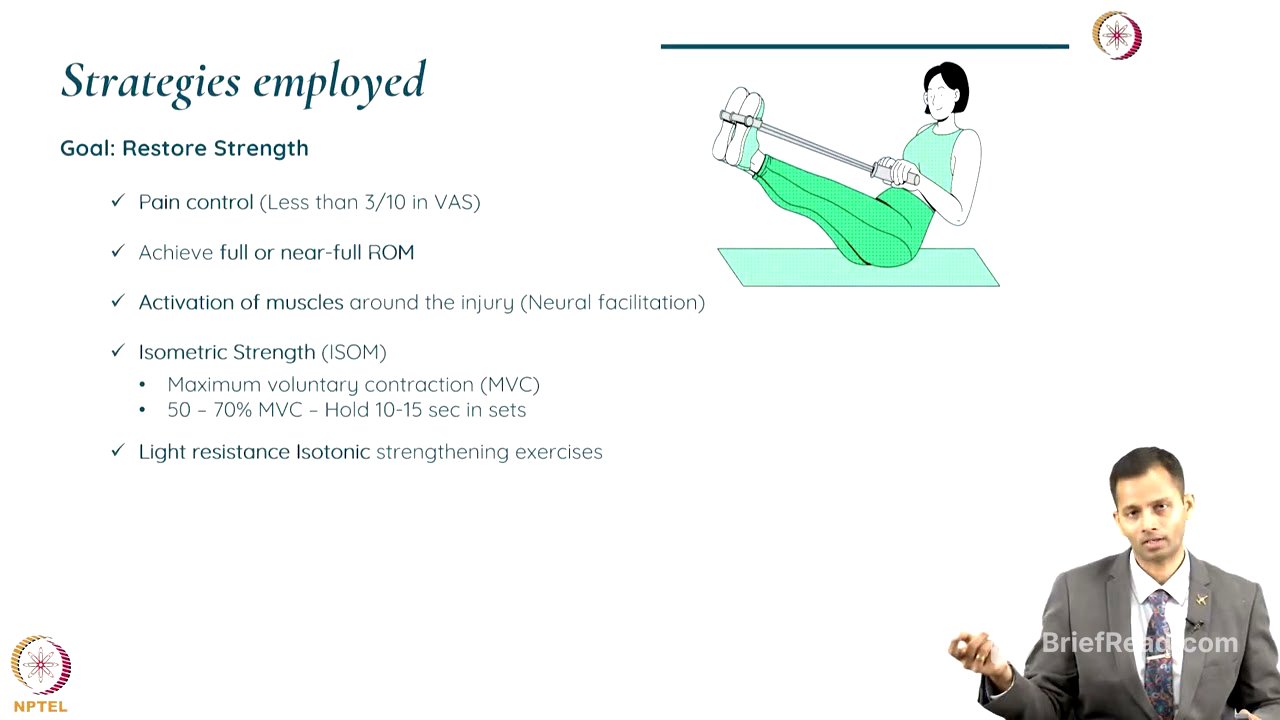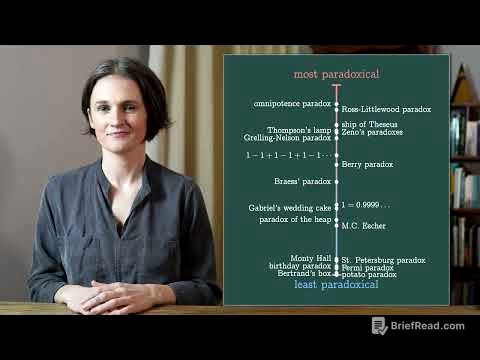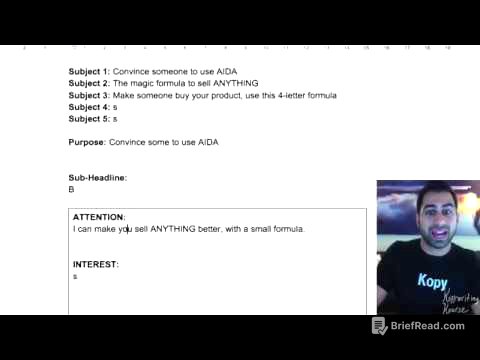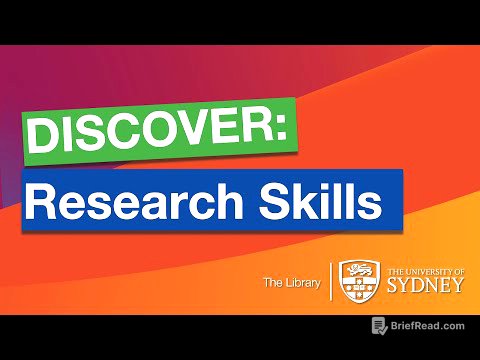TLDR;
This lecture discusses the subacute and functional phases of sports rehabilitation, focusing on restoring function, strength, and motor control to return athletes to their pre-injury performance levels. It emphasizes a structured, phase-wise progression, the importance of a team approach in decision-making, and the incorporation of long-term reinjury prevention programs.
- Phase 2 focuses on restoring function for activities of daily living, improving range of motion, and introducing basic sport-specific movements.
- Phase 3 aims to return the athlete to their pre-injury performance level through advanced strength training and sport-specific drills.
- A collaborative team approach involving athletes, coaches, trainers, therapists, and physicians is crucial for making informed return-to-sport decisions.
Introduction [0:15]
The lecture addresses the question of when an athlete can return to sports after an injury, specifically focusing on the subacute and functional phases of rehabilitation. It introduces the speaker, Wing Commander Dr. Chandra Shaka Guru, a sports medicine physician, who will guide the audience through the goals, strategies, and practical aspects of these rehabilitation phases, including return-to-sport decisions.
Recap of Tissue Healing Phases [1:53]
The lecture reviews the phases of tissue healing: inflammation (3-7 days), proliferation (3 weeks), and remodeling (post 3 weeks). It explains how rehabilitation targets differ in each phase, with the acute phase focusing on preventing further damage and addressing impairment. The subacute phase aims to restore function for daily activities by improving range of motion, strength, flexibility, and coordination. The return-to-sports phase introduces sport-specific drills and advanced strengthening, while the final phase incorporates injury prevention programs.
Phase 2: Subacute Phase [5:23]
The primary goal of the subacute phase is to restore function to perform activities of daily living (ADL), such as bathing, dressing, walking, and climbing stairs. Achieving this involves restoring strength, improving function for ADLs, and introducing basic sport-specific movements to enhance motor control. Phase targets include pain management (keeping pain below 3-4 on a scale of 10), achieving a full and pain-free range of motion, and addressing motor control by breaking down sport-specific movements into simpler components for retraining. Strengthening exercises progress from isometric to low-load isotonic activities.
Strategies for Restoring Strength in Phase 2 [7:26]
Strategies to restore strength include pain control, achieving a near-normal range of motion, and activating inhibited muscles around the injured area through neural facilitation. For example, after knee injuries, the quadriceps muscle, particularly the vastus medialis obliquus (VMO), tends to get inhibited. Activating the VMO is crucial for regaining full knee extension. Isometric exercises using the concept of maximum voluntary contraction (MVC) are introduced, where the athlete performs contractions at 50-70% of their maximum force on the injured side, guided by their performance on the uninjured side. Light resistance isotonic exercises using colored resistance bands or tubes are also incorporated. The goal is to achieve at least 70% of the strength of the uninjured limb.
Restoration of Function and Introduction of Sport-Specific Movements in Phase 2 [12:26]
Restoring function involves achieving clinical improvement with minimal discomfort during activities of daily living. Progress is objectively measured by comparing range of motion and muscle strength with the uninjured limb. Manual muscle testing or handheld dynamometers can be used to assess muscle strength. Functional tests like wall push-ups, knee push-ups, full body push-ups, mini squats, half squats, full squats, and hop tests are used to assess functional capability. Basic sport-specific movements are introduced to address deficits that may have contributed to the injury. Cross-training, such as pool walking or cycling, is used to maintain cardiovascular endurance without stressing the injured area. Core strengthening and exercises for uninjured regions are also included to maintain overall fitness.
Progression to Phase 3 [17:07]
Progression to phase three occurs when the individual attains full and pain-free range of motion, achieves at least 70% strength compared to the uninjured limb, and can perform activities of daily living with minimal discomfort. Basic conditioning and strength for sport-specific activities should be addressed, along with psychological and nutritional support.
Phase 3: Functional Phase (Return to Sports) [17:48]
The aim of phase three is to return the injured individual to their pre-injury level of performance by developing advanced strength and incorporating sport-specific drills. Phase targets include maintaining range of motion, modulating pain, and enhancing motor control for high-speed agility drills, side-cutting maneuvers, and landing techniques. Advanced strength training exercises should simulate the demands of the sport and become more complex.
Strategies for Developing Advanced Strength and Sport-Specific Skills in Phase 3 [19:54]
The coach or trainer plays a predominant role in this phase, focusing on traditional strength training, power drills, eccentric training, plyometrics, and box jump training. Drills that involve acceleration, sudden changes in direction, and deceleration are incorporated. The target is to progress from 70% strength compared to the uninjured limb to 90% or even close to 100%. Functional testing includes single-leg hops and triple jumps, with video analysis used to assess landing techniques.
Case Scenario: Return-to-Sport Decision [21:45]
The lecture revisits the scenario of a young football player with a hamstring strain who has progressed through phase two rehabilitation and is now able to walk pain-free and perform activities of daily living. The therapist has advised starting sport-specific drills and a gradual running protocol. The decision to return the athlete to sport requires considering factors such as tissue health, tissue stress, biomechanics, and specific strengthening protocols.
Factors to Consider for Return-to-Sport Decision [23:51]
Key factors include assessing tissue health through ADL performance and symptom improvement, evaluating tissue stress with functional tests like sprinting and box jumps, and assessing biomechanics for landing and cutting strategy issues. The program should include eccentric contraction activities, such as the Nordic hamstring exercise, to improve deceleration control. Adequate warm-up and cool-down routines are also essential.
Collective Decision-Making and Long-Term Considerations [25:31]
The return-to-sport decision should be a collective one, involving the athlete, coach, trainer, therapist, and sports physician. A detailed rehab program should be in place, considering the athlete's level, training phase, and various risk factors. External pressures from coaches, family, and team managers should be considered, along with the potential for reinjury. A team approach helps resolve conflicts of interest, especially with the increasing commercialization of sports and the fear of litigation.
Summary and Key Takeaways [27:52]
Phase-wise rehabilitation provides a structured progression, starting from addressing impairments to restoring activities of daily living and sport-specific performance. Restoring strength involves activating the muscle, comparing it with the uninjured limb, and progressing to advanced strengthening protocols. Motor control and retraining form the foundation for successful sports-specific rehabilitation. A team approach is crucial for decision-making in return to sport, and incorporating a long-term reinjury prevention program helps reduce the risk of recurrence.









